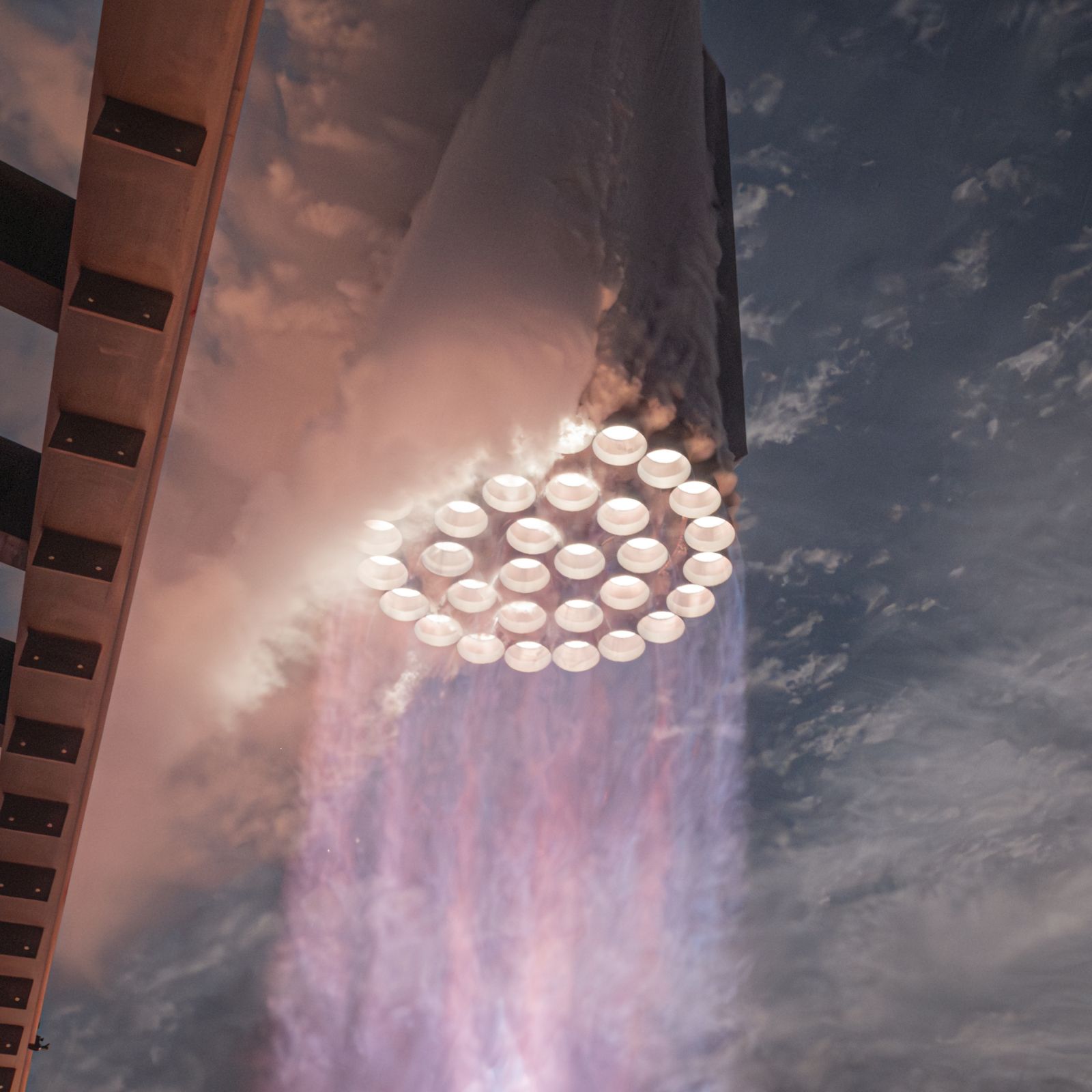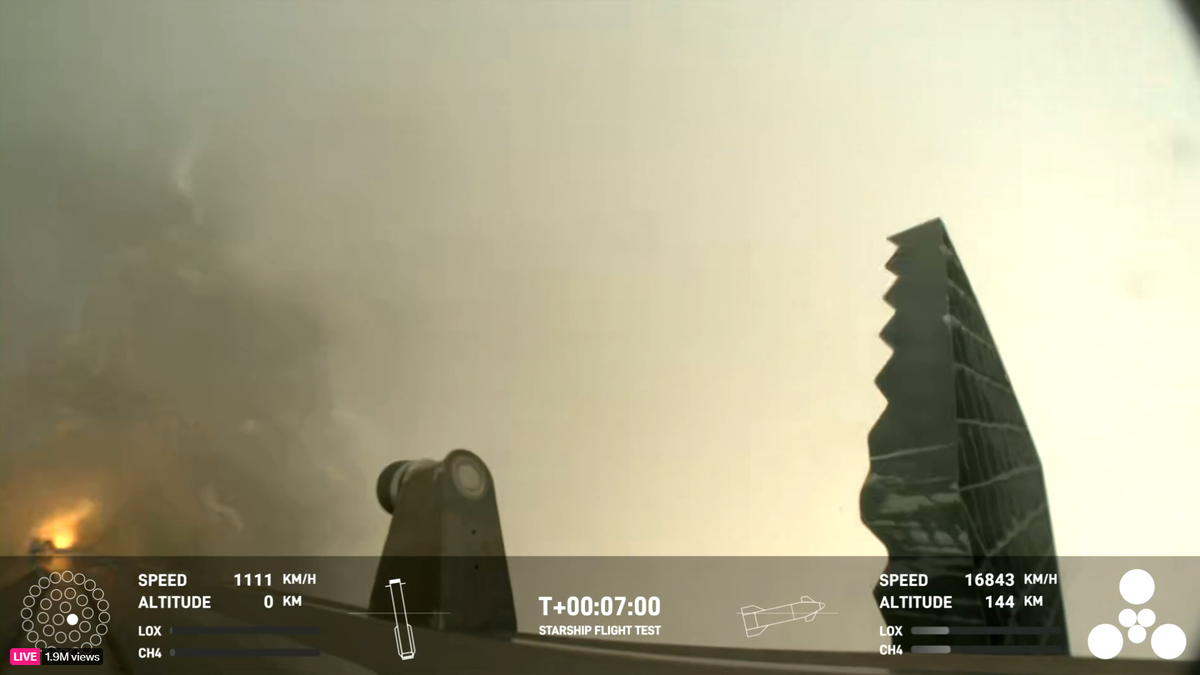Follow us on Google News (click on ☆)


Starship's launch during its third flight.
Credit: SpaceX
When the 33 Raptor engines of the Starship ignited, a cloud of dust and smoke enveloped the rocket, signaling the beginning of its ascent. This third attempt represents a significant progression from previous explosive failures.
Erratic movements for the booster and the spacecraft
During this flight, the Starship had to contend with the loss of its Super Heavy booster, a crucial component for propelling the rocket out of Earth's atmosphere. A few minutes after takeoff, following a successful separation of the two stages, the Super Heavy booster began its return maneuver, attempting to reverse its trajectory for a controlled descent.

The last view of the Super Heavy booster during Starship's third flight, showing one of its 33 main engines reignited for an attempted landing on March 14, 2024, above the Gulf of Mexico.
Credit: SpaceX
However, a failure occurred at the moment of the engines' reignition, intended to slow the booster's descent toward the ocean. A visibly oscillating motion shook the booster, and it was at the moment of engine reignition that connection was lost.
The mission was also marked by the loss of the Starship vehicle itself. After separating from its booster, the spacecraft continued its trajectory, entering a suborbital flight phase over the Earth. The goal was to demonstrate Starship's ability to perform certain key maneuvers, including reigniting its Raptor engines and transferring cryogenic fuel between tanks, crucial steps for its future use in long-distance space missions.

Stunning image of plasma enveloping the Starship spacecraft, shortly before contact was lost.
Credit: SpaceX
However, communication with the Starship was lost during its re-entry into the Earth's atmosphere. Just like with the booster, the Starship vehicle seemed to undergo erratic movements in the final seconds of the video. Nonetheless, this loss provides an invaluable opportunity to gather data and enhance Starship's robustness for future flights.
A promising future
During this third test flight, SpaceX's Starship demonstrated that it possesses all the capabilities required to successfully conduct commercial missions similar to those of traditional launchers. Its success in reaching a quasi-orbital velocity and executing complex maneuvers is testament to this.
The main distinction, however, lies in the Starship's reusability ambitions, with the components returning to Earth. The necessary improvements mainly concern the recovery system, namely controlling the Super Heavy booster and the spacecraft itself during their descent.
These challenges, although significant, are confined to the mission's final phase and do not question Starship's ability to function effectively as a super-heavy launcher.
The Starship is not just a SpaceX project: it carries NASA's hopes for the Artemis 3 mission, which aims to bring humans back to the Moon. With less than two years to meet NASA's requirements, the pressure is intense. With its unparalleled payload capacity, it is also set to play a central role in deploying the next generation of Starlink internet satellites and other commercial missions.